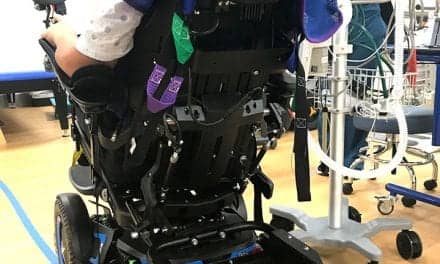Scientists at The Ohio State University Wexner Medical Center, College of Engineering and College of Medicine report they have developed technology to “retrain” cells to help repair damaged brain tissue. Their study is published in Science Advances.
In this video here, the researchers explain the technology, which they hope could someday help patients regain speech, cognition and motor function, even when administered days after an ischemic stroke.
Using a process created by Ohio State called tissue nanotransfection (TNT), the researchers introduce genetic material into cells. This allows them to reprogram skin cells to become something different – in this case vascular cells – to help fix damaged brain tissue.
In this mouse study, cells were ‘pre-conditioned’ with specific genes and injected into the stroke-affected brains, where they promoted the formation of new blood vessels via reprogramming and the repair of damaged brain tissue, a media release from The Ohio State University Wexner Medical Center explains.
Rewrite the Genetic Code
“We can rewrite the genetic code of skin cells so that they can become blood vessel cells. When they’re deployed into the brain, they’re able to grow new, healthy vascular tissue to restore normal blood supply and aid in the repair of damaged brain tissue.”
— Daniel Gallego-Perez, an assistant professor of biomedical engineering and surgery at Ohio State who is leading the research
The researchers studied the process in mice and found that those treated with this cell therapy regained 90% of their motor function. MRI scans showed damaged areas of the brain were repaired within a few weeks, the release continues.
“We found that the mice have a higher recovery because the cells that are being injected into the affected area also release healing signals in the form of vesicles that help in the recovery of damaged brain tissue.”
— Natalia Higuita Castro, assistant professor of biomedical engineering and surgery at Ohio State and a co-lead author on the study
“The thought was that once brain tissue dies, that was it. We’re now learning that there could be opportunities to regenerate cells to restore brain function.”
— Dr Shahid Nimjee, a neurosurgeon at Ohio State Wexner Medical Center, a member of Ohio State’s Neurological Institute and co-author of the study
Researchers continue to study this approach, and they’re also exploring other potential uses for this technology to treat brain disorders such as Alzheimer’s and autoimmune diseases, per the release.
[Source(s): The Ohio State University Wexner Medical Center, EurekAlert]
Related Content:
These Could Help Heal the Brain After Stroke
BrainQ Stroke Rehab Device Study Suggests Encouraging Results
They Had COVID-19 and a Stroke, Then This Happened





